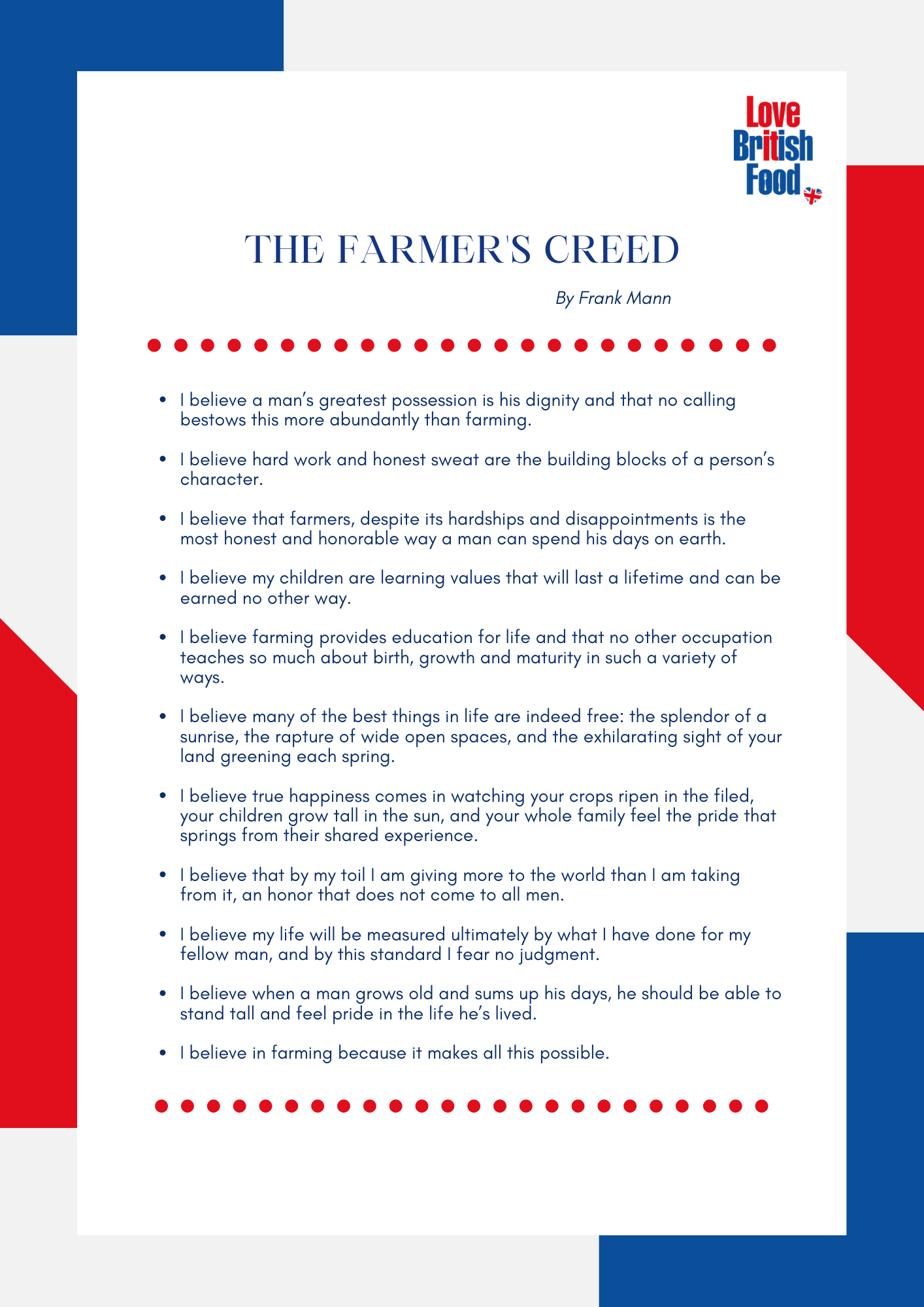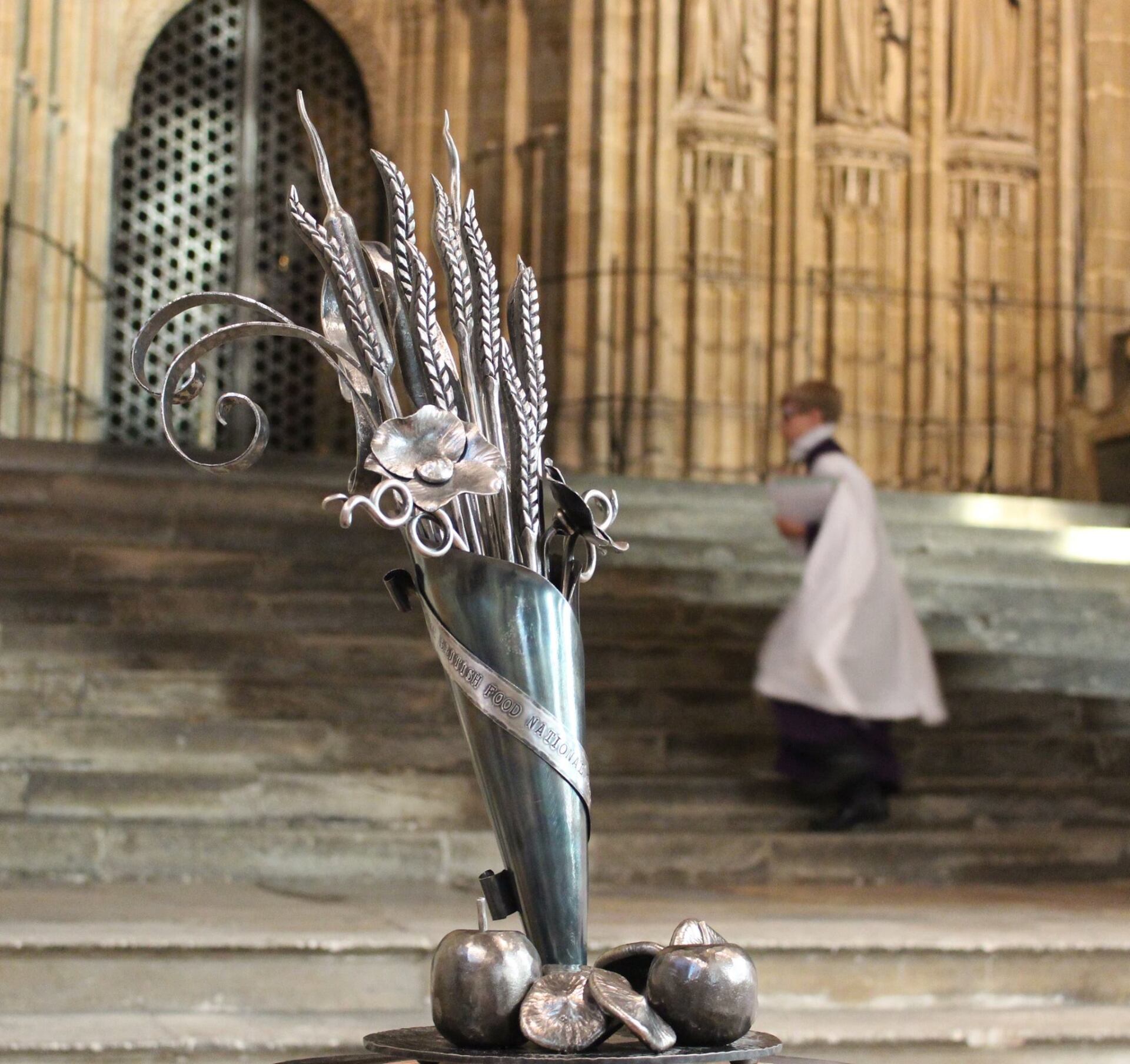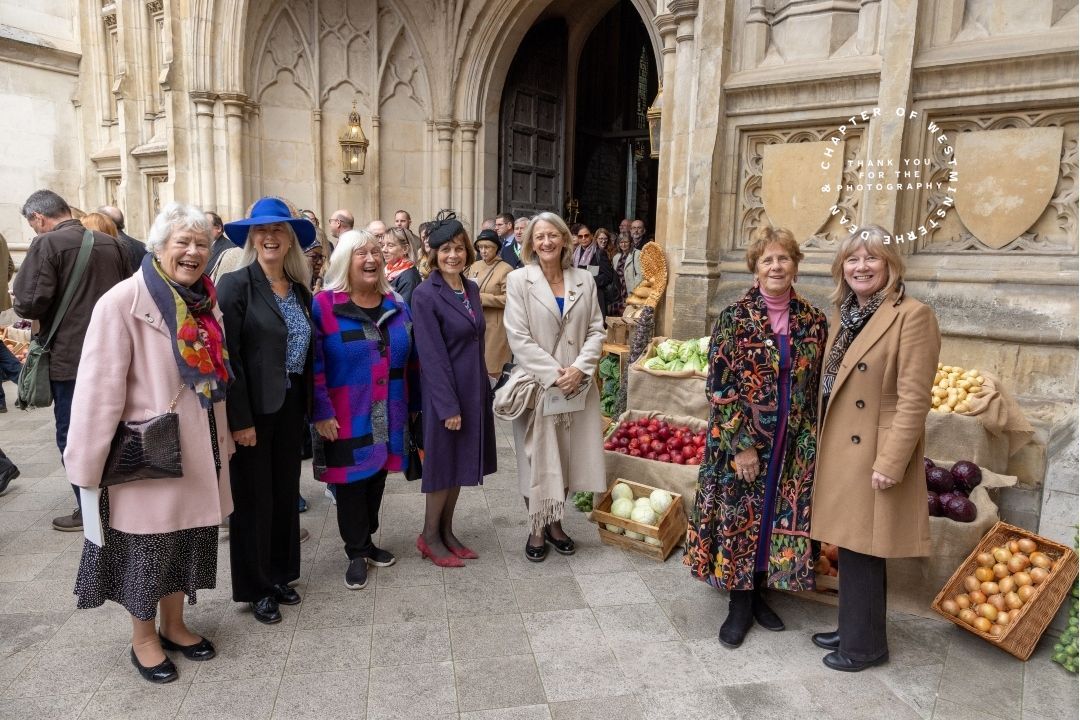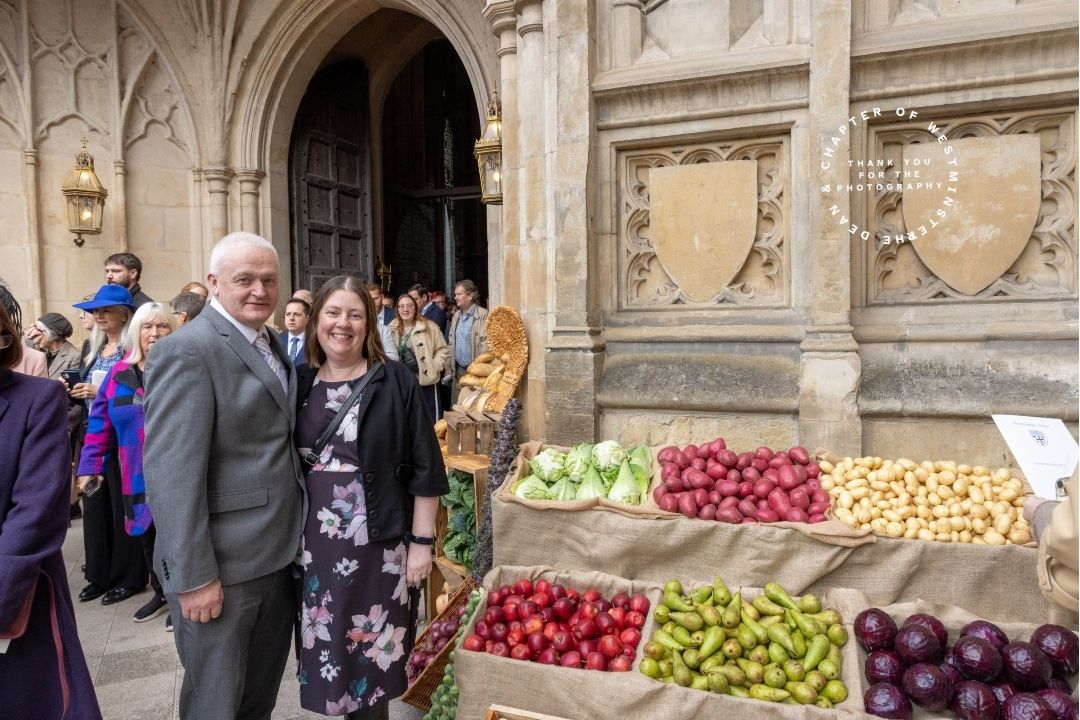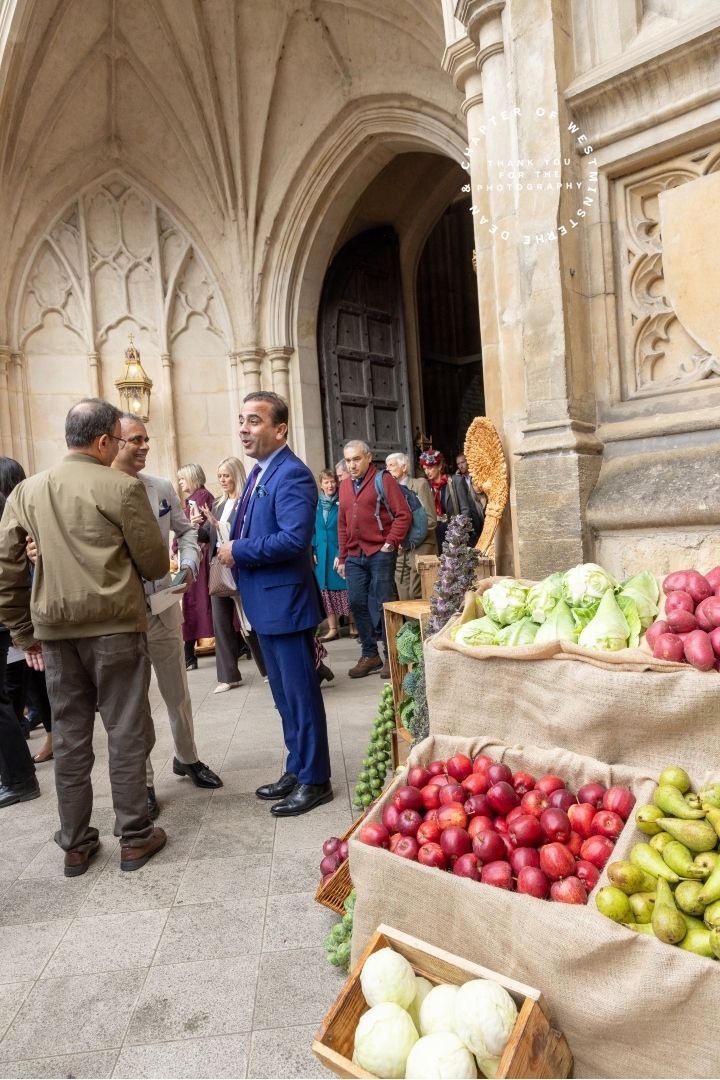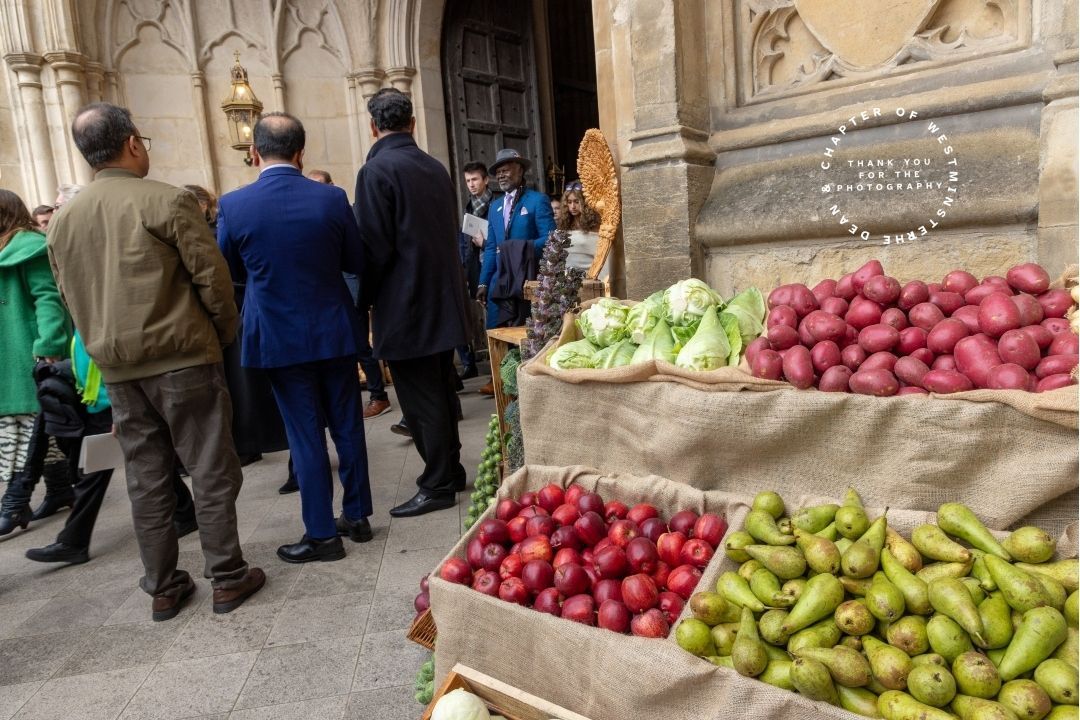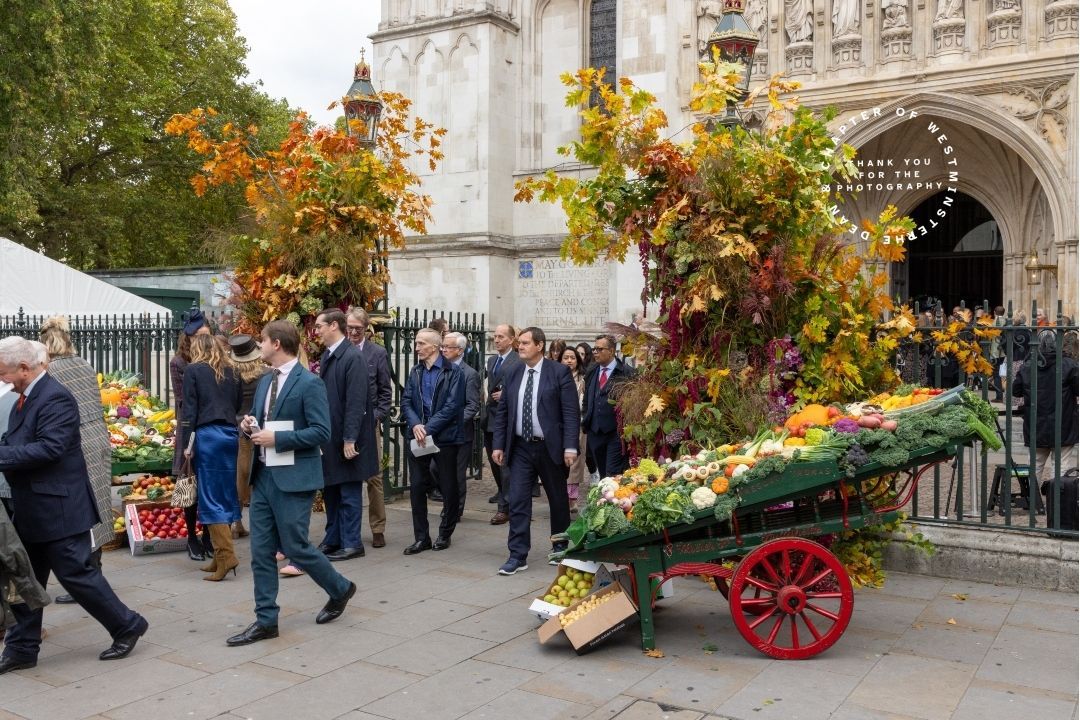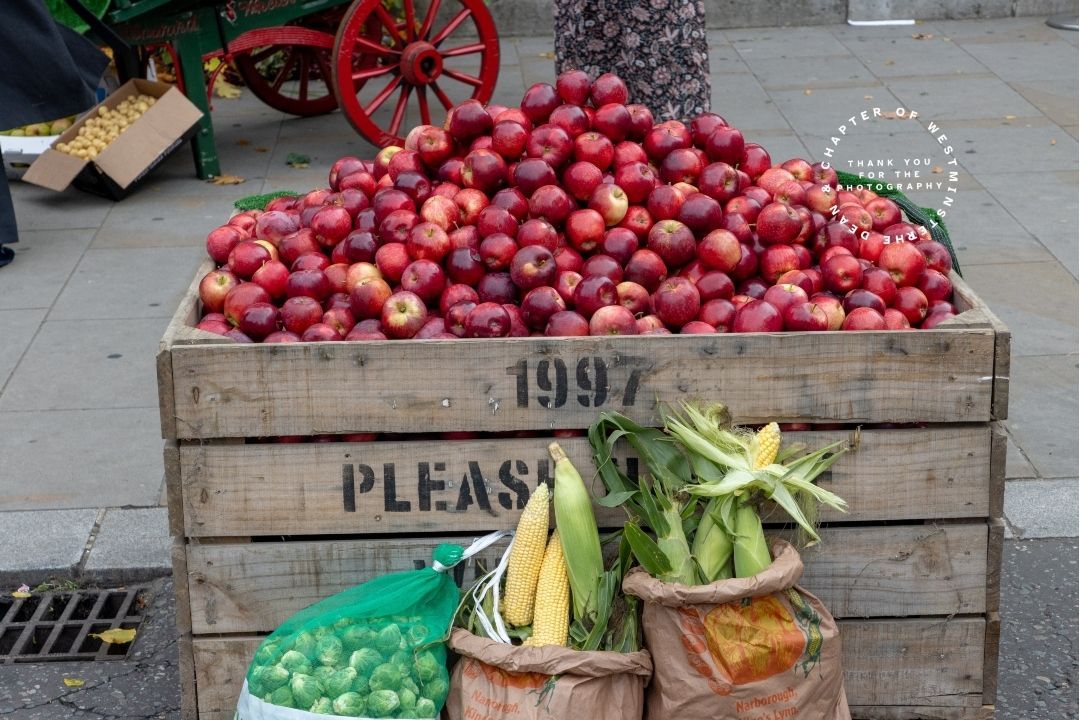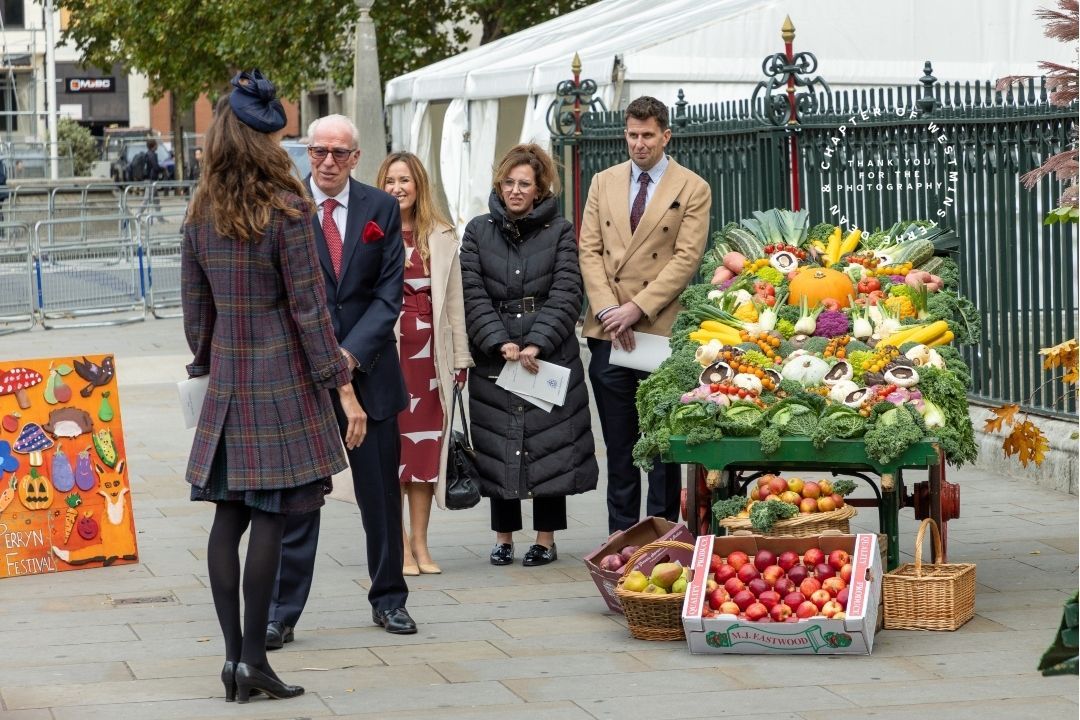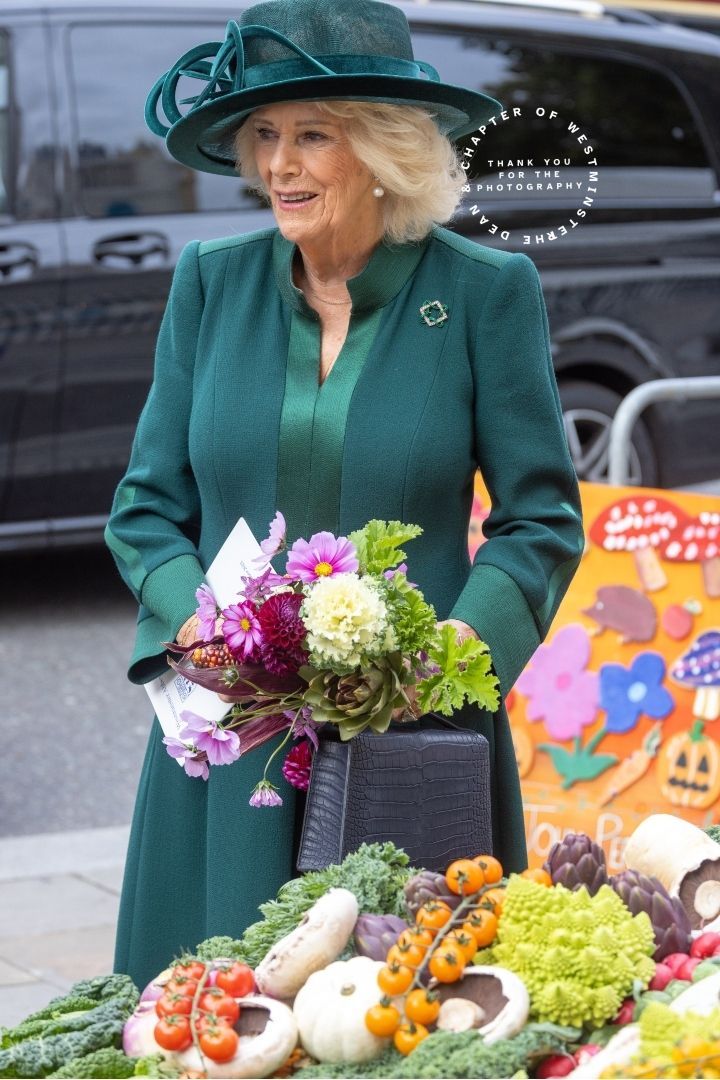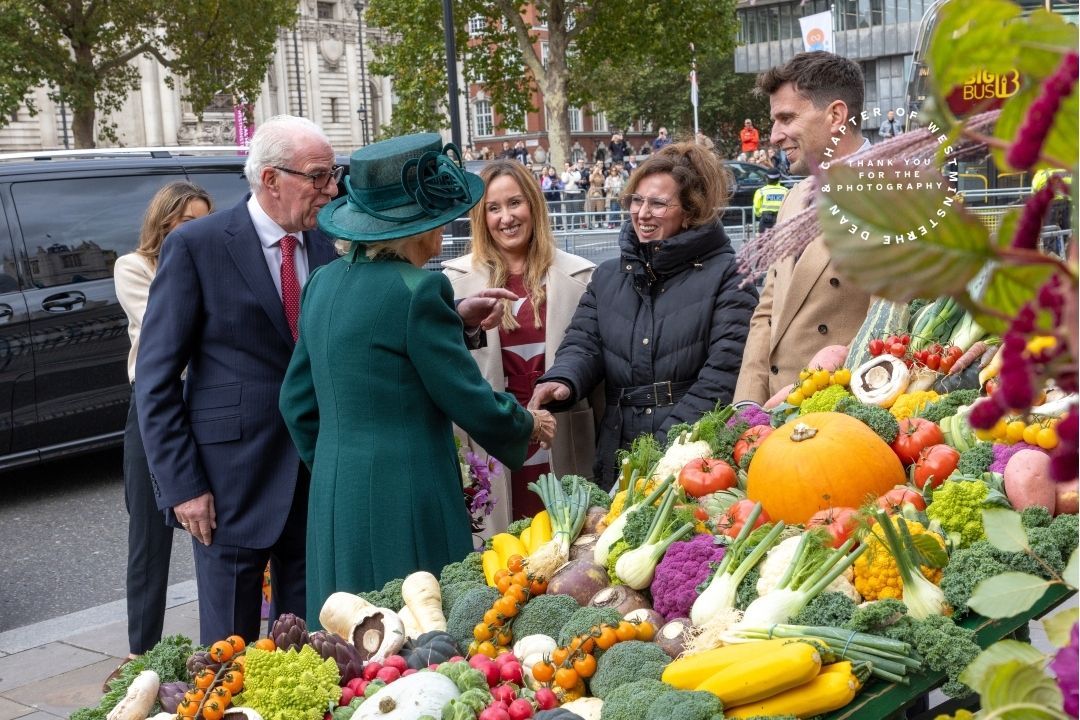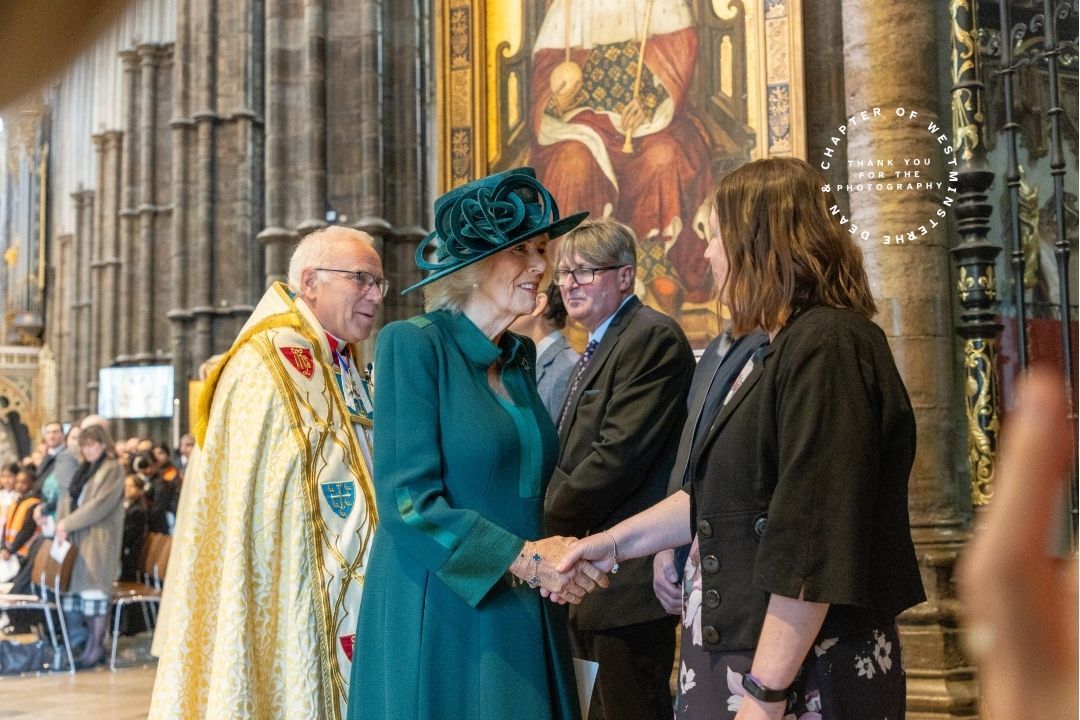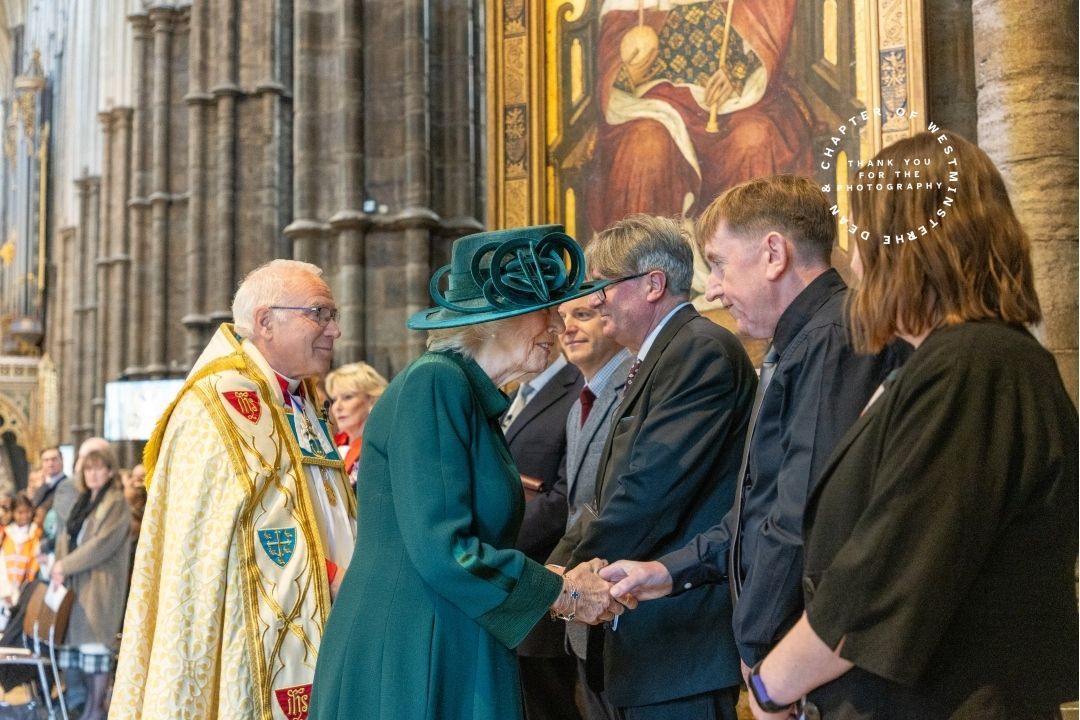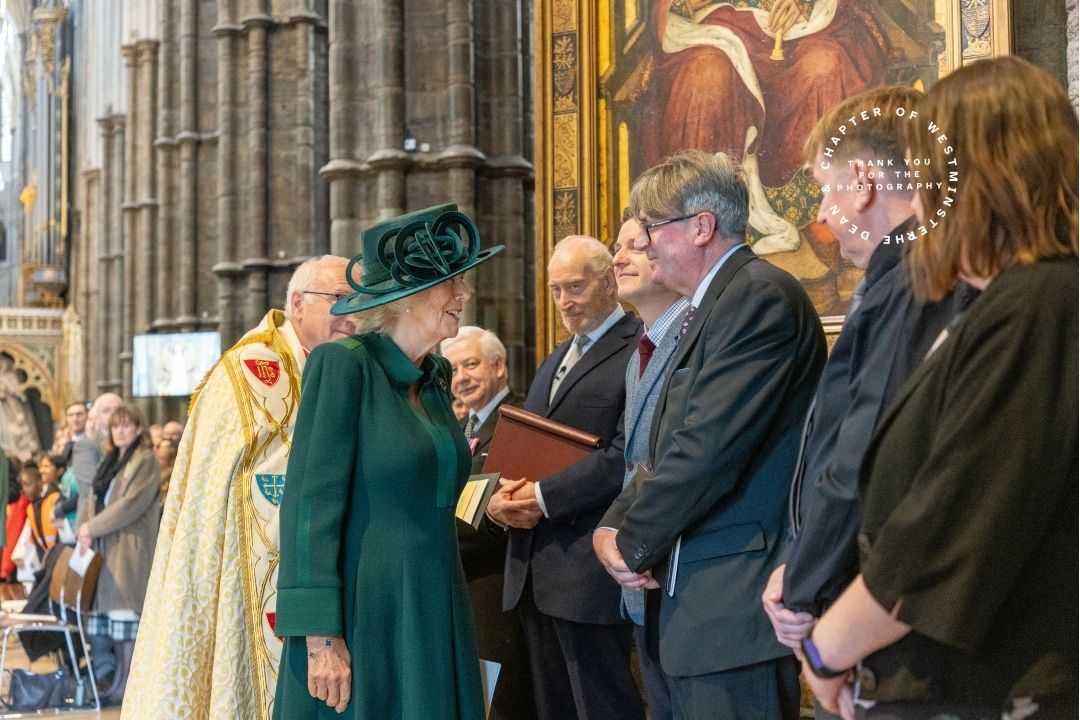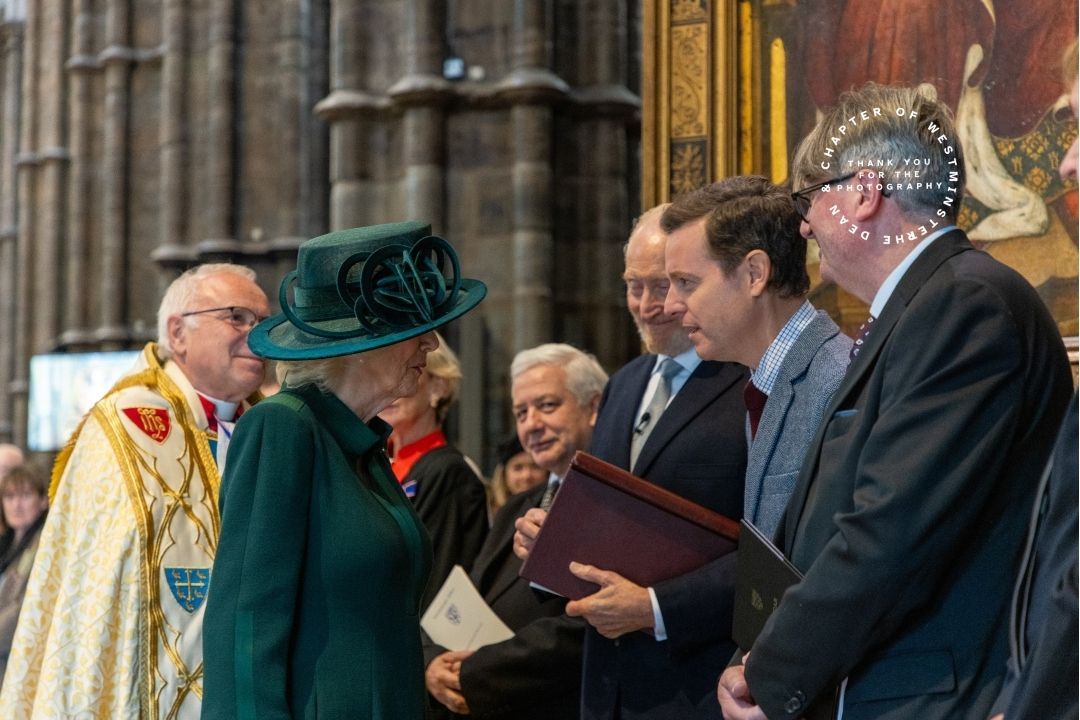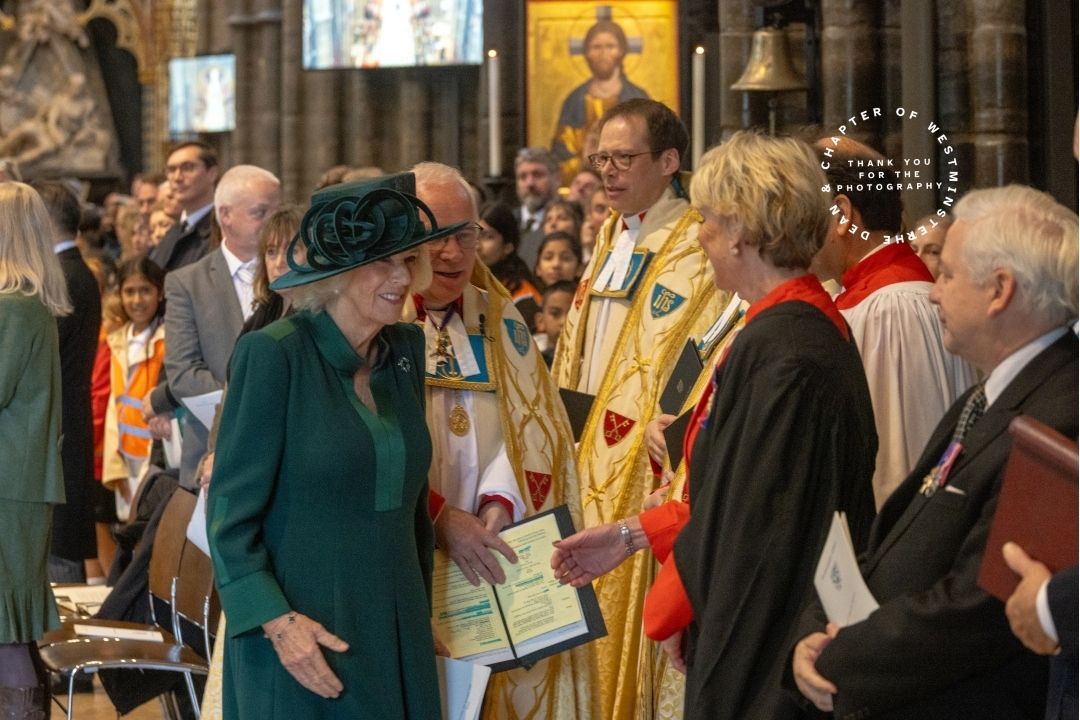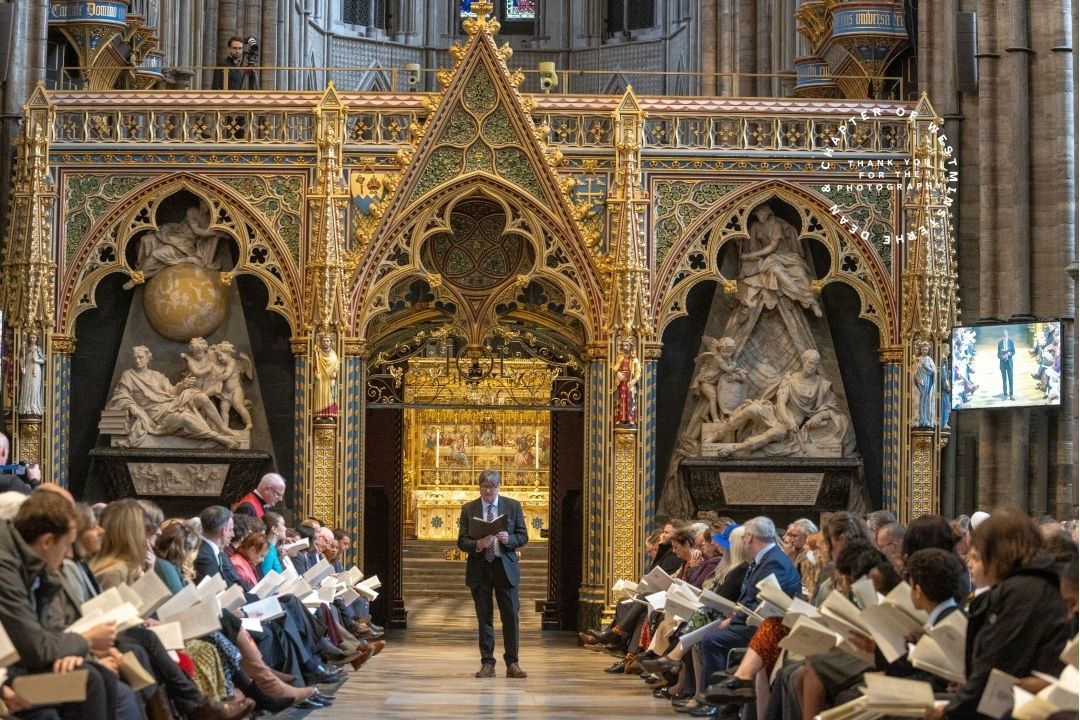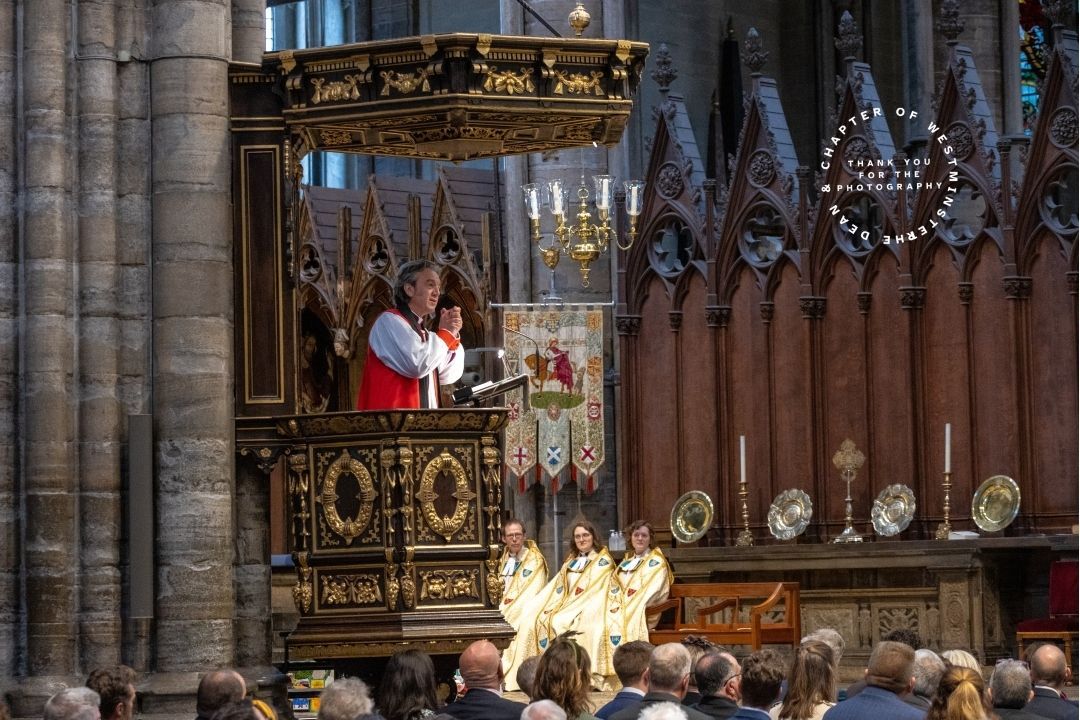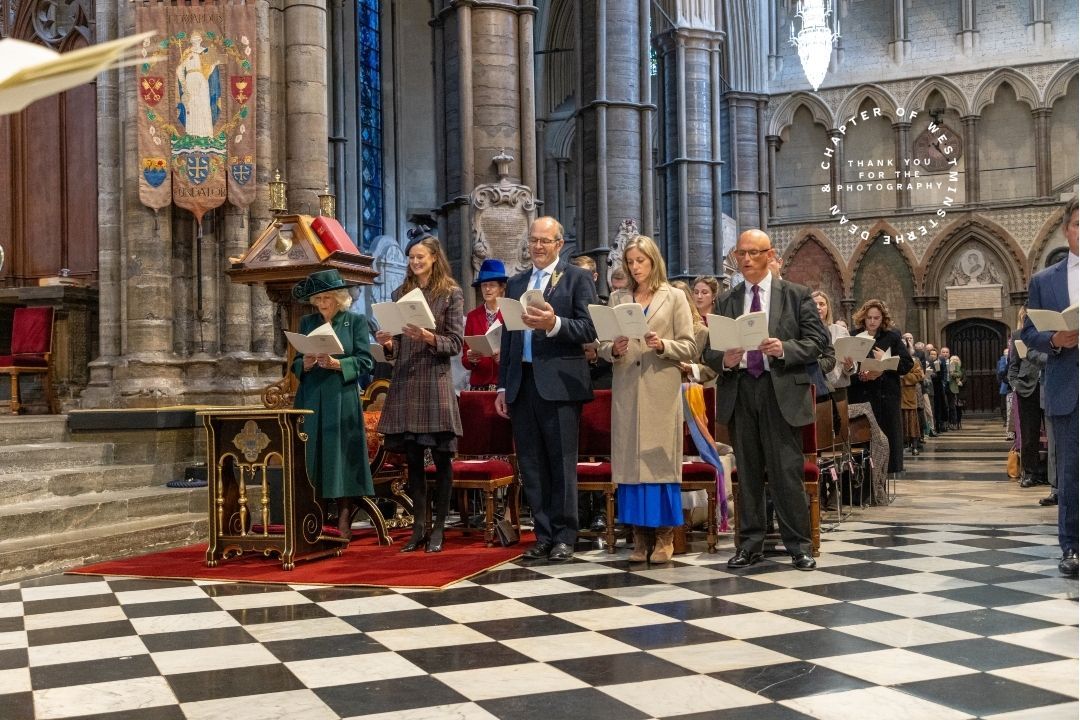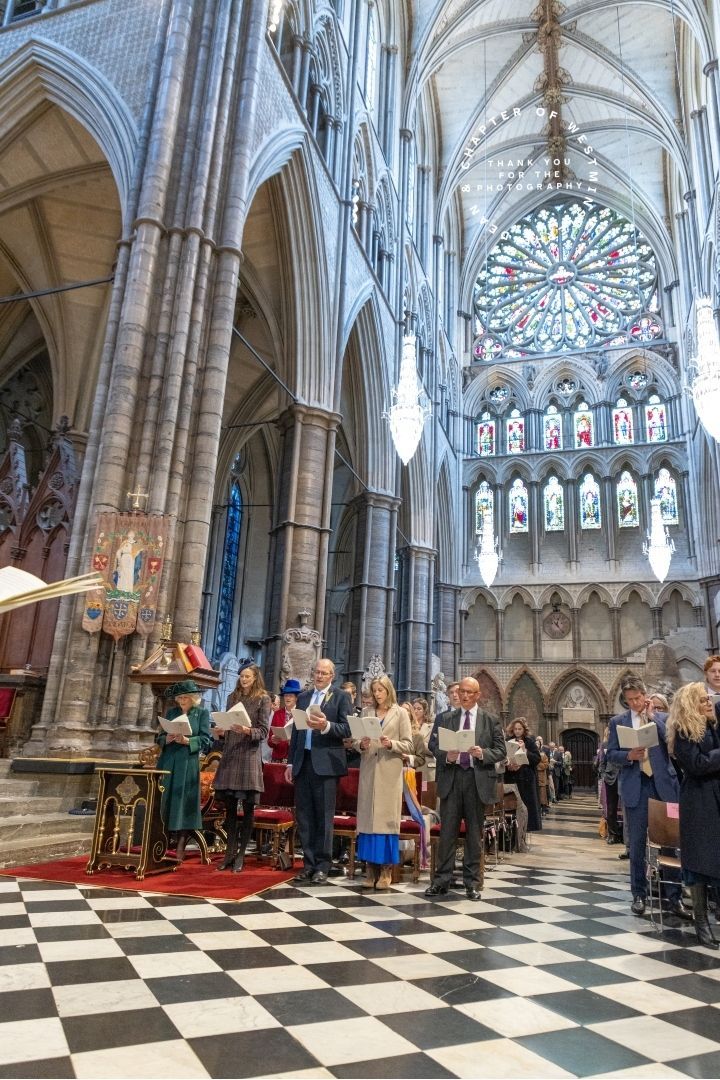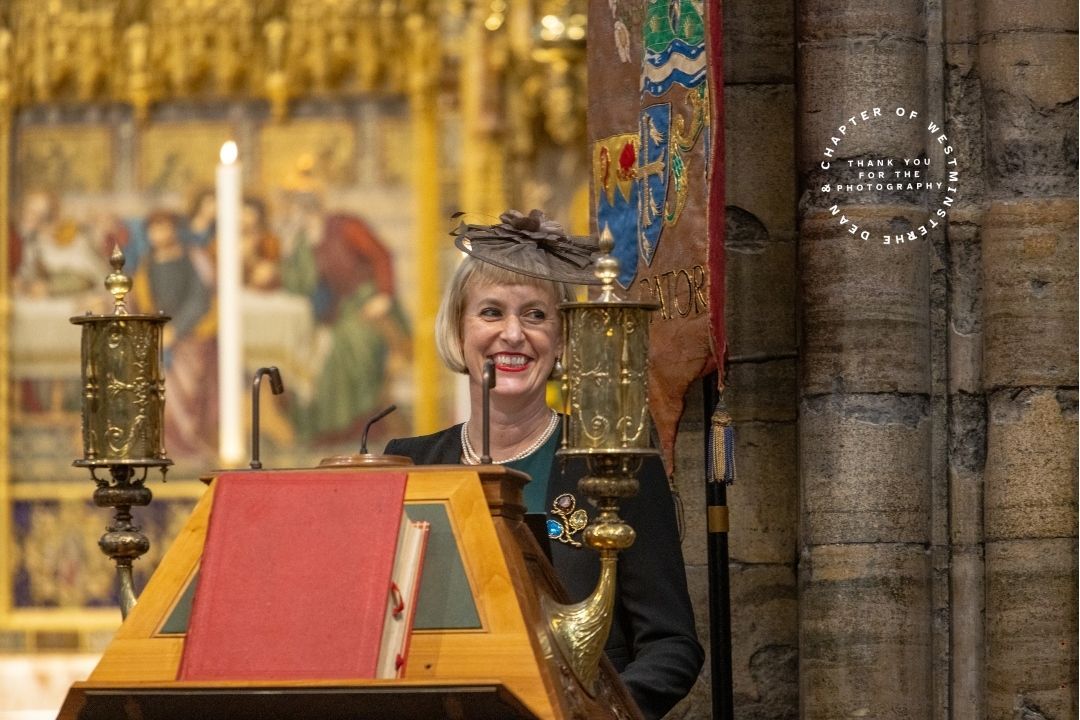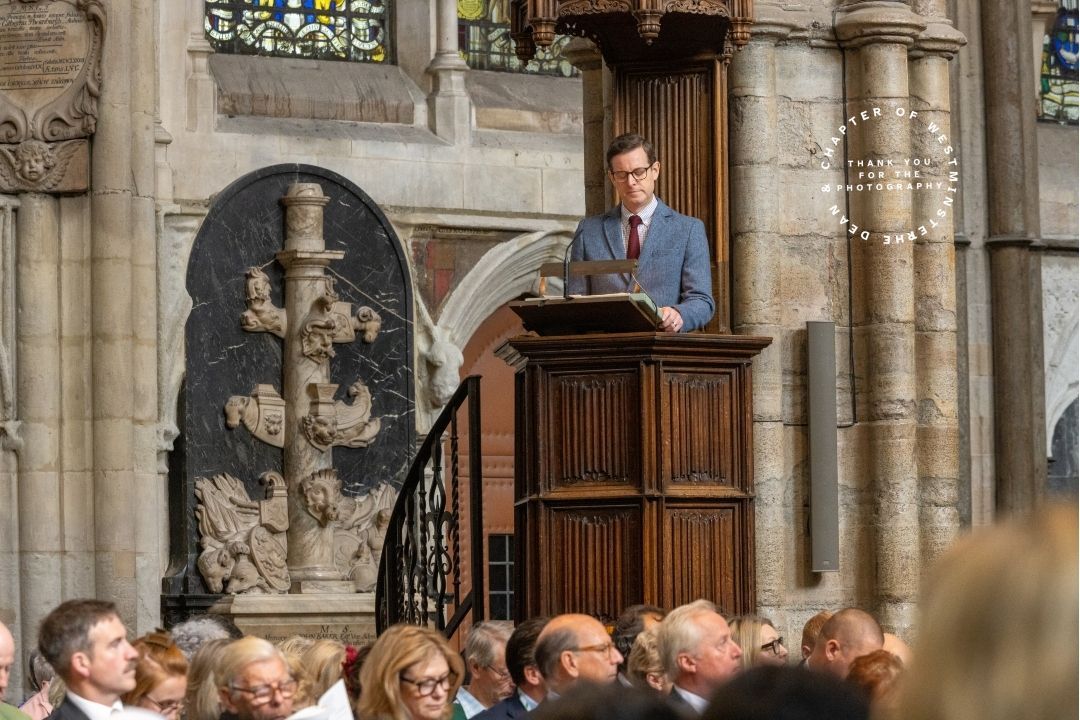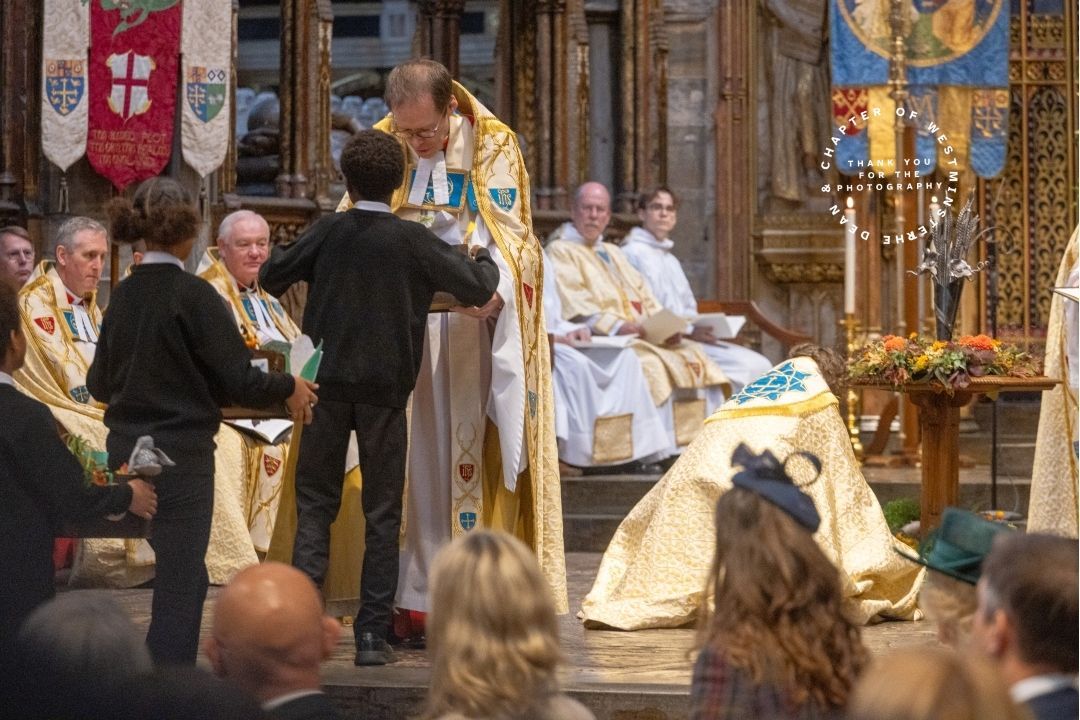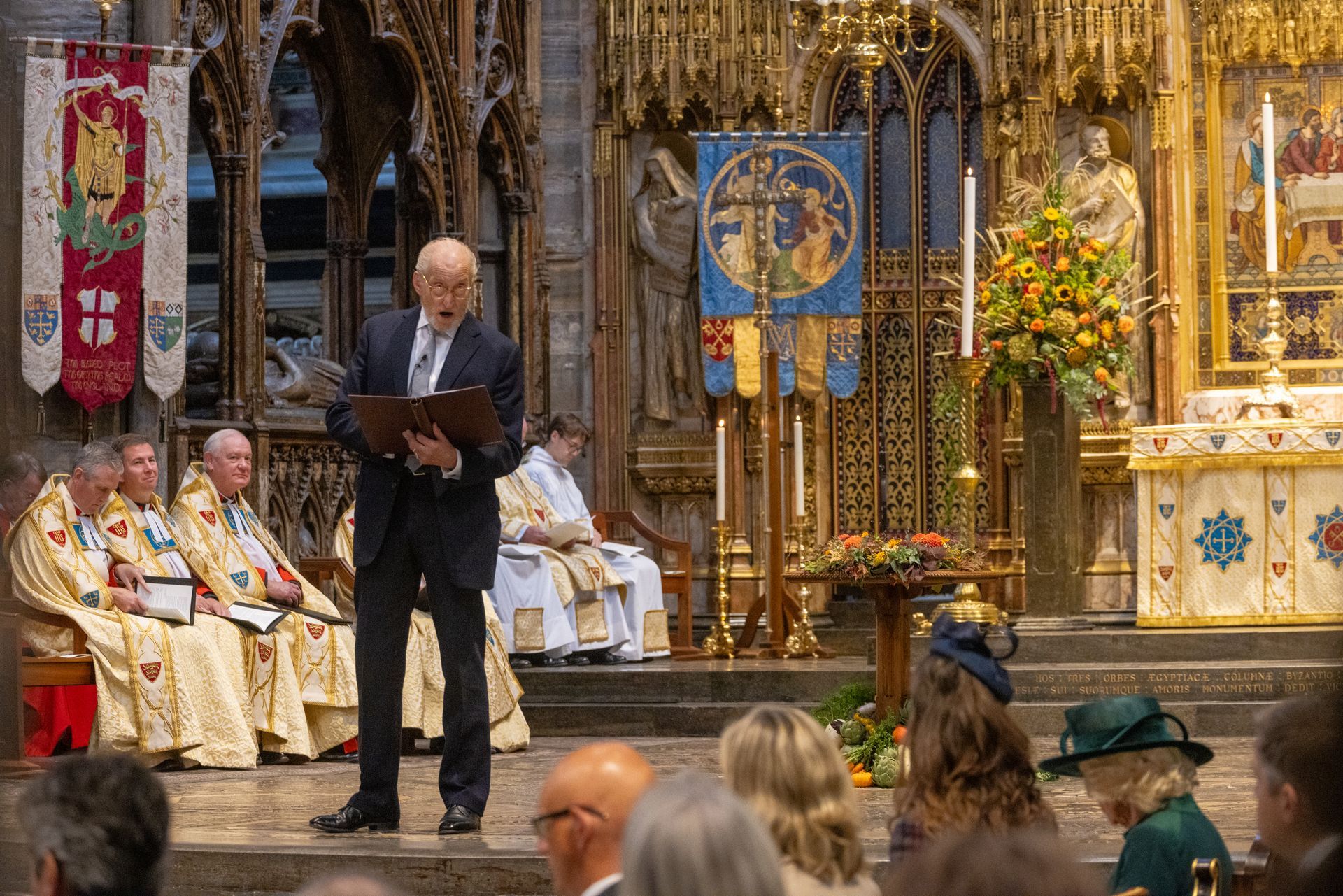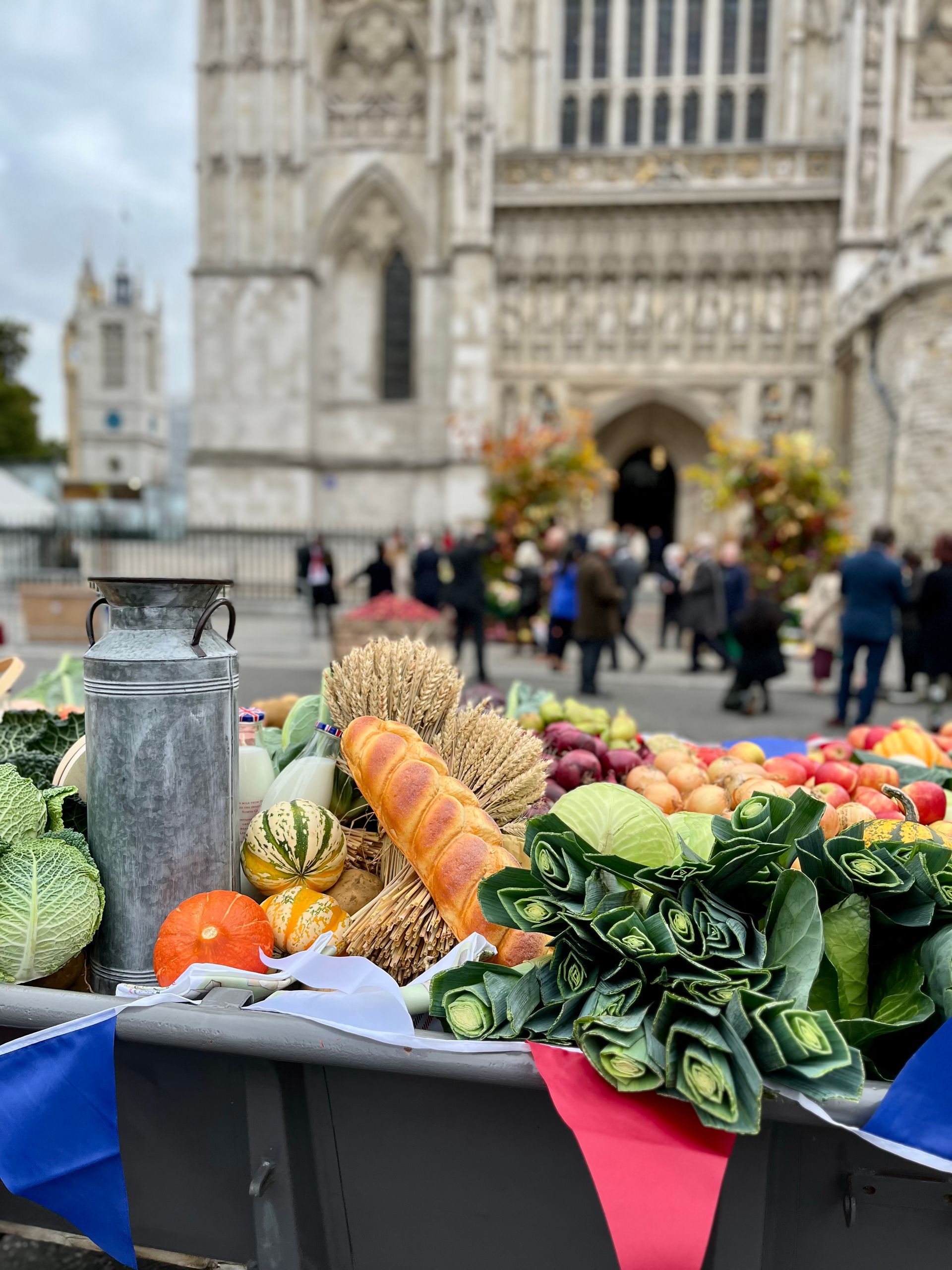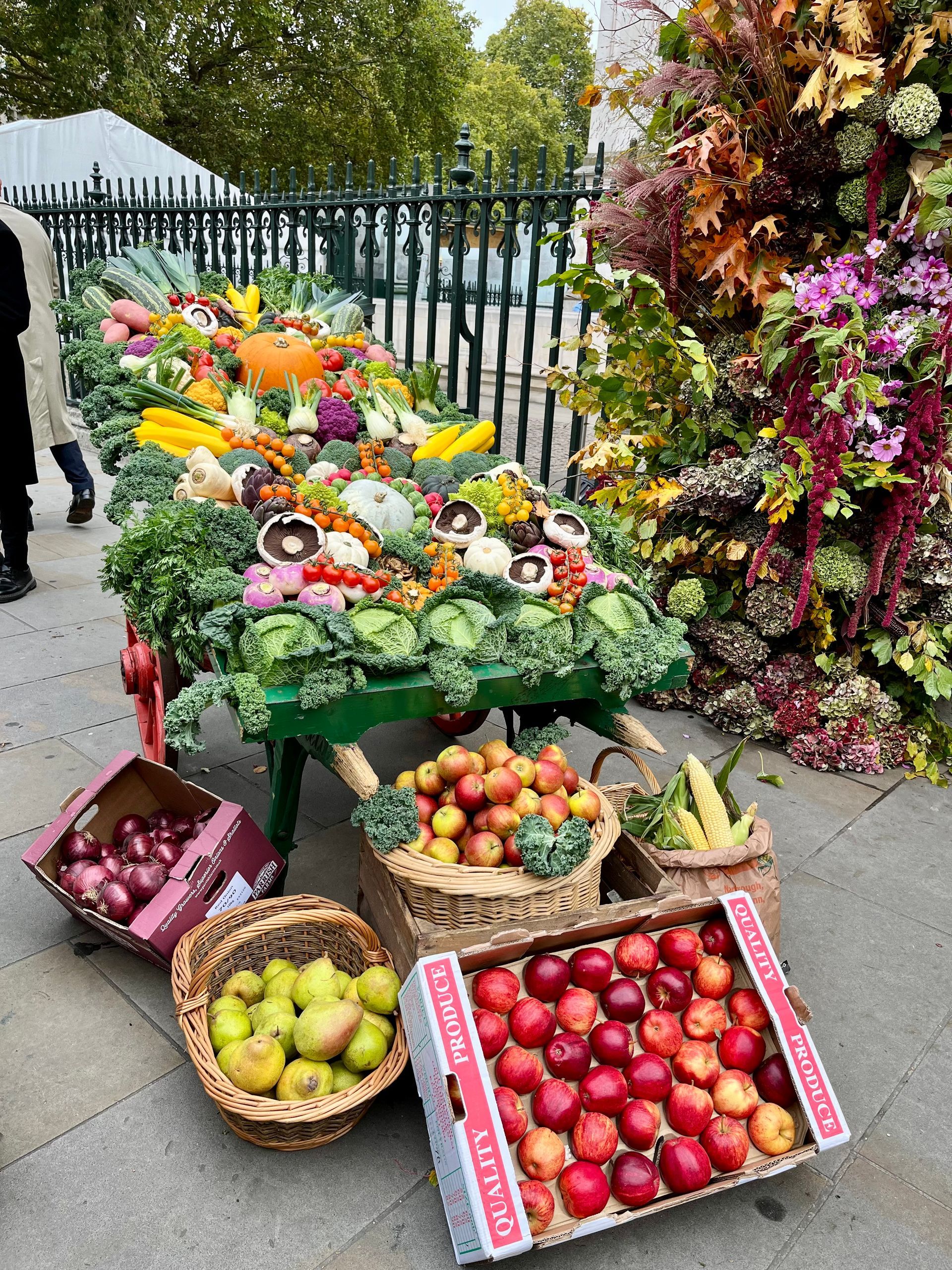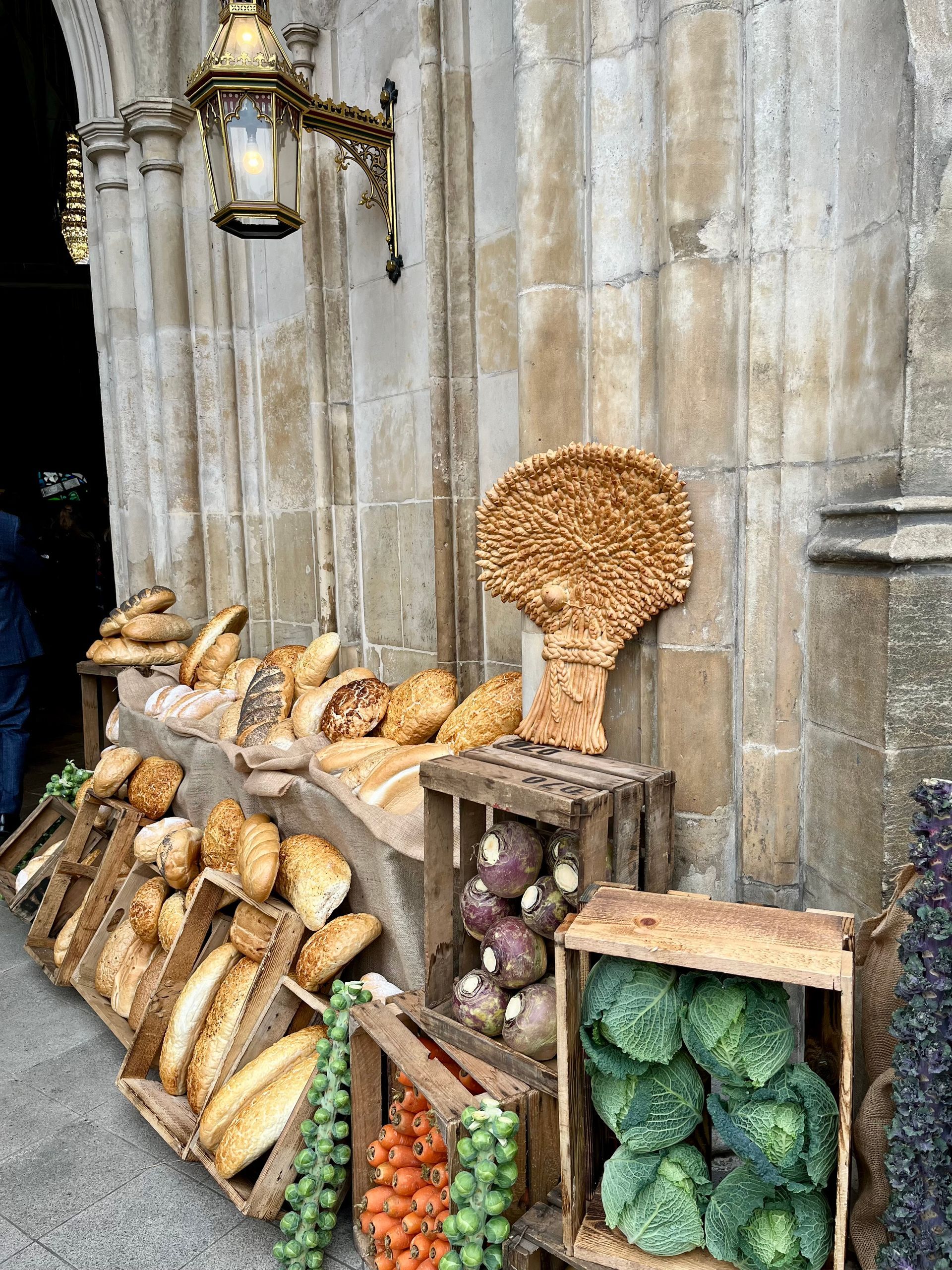Harvest
The Harvest Torch and Love British Food’s National Harvest Service 2025
On 16 October, World Food Day, Westminster Abbey welcomed 2,200 guests for this year’s National Harvest Service – a thanksgiving for farmers, a remembrance of those who face hunger, and an urgent call to make our abundant food more accessible to everyone in the UK. Her Majesty The Queen joined the congregation, and we were honoured to carry the Harvest Torch into the Abbey as part of the Offertory Procession.
The service closed British Food Fortnight and brought together farming leaders, MPs and peers, chefs and broadcasters, schoolchildren and volunteers from food redistribution charities – all standing together to celebrate the richness of British food while confronting the wrenching reality that too many households go without. As Love British Food’s founder, I felt the service perfectly captured both a sense of celebration and responsibility in equal measure.
Bishop Andrew Rumsey framed that balance beautifully when he spoke of the link between “soil and soul” – a reminder that our connection to the land is both practical and spiritual. His words underlined what we must protect: resilient farms, thriving rural communities and the natural landscapes that sustain us.
Voices and symbols of the day
The Abbey service mixed ceremonial pageantry with real-world purpose. Readings were given by Charles Dance OBE and Matt Baker MBE; Poet Laureate Simon Armitage read a poem presented as a gift to The Queen; NFU President Tom Bradshaw carried the Harvest Torch; and harvest boxes designed by pupils from John Perryn Primary School led the Offertory, filled with produce collected by City Harvest. A vintage Massey Ferguson 35 tractor and abundant floral and food displays framed the Great West Door — a visual celebration of Britain’s seasonal bounty.
Working together to relieve hunger
The service not only provided an opportunity to thank farmers but also a chance to act decisively. In preparation for the service at Westminster Abbey, Love British Food has deepened its partnerships with redistribution charities including City Harvest, The Felix Project, Trussell and the Coronation Food Project so that produce reaches community projects and food hubs. After the service, the displays and trailer produce were distributed to four local community partners – a practical step that turned thanksgiving into meals for those in need.
We must not shy away from the scale of the problem. Recent research shows millions in the UK are living with food insecurity; our work with redistribution partners seeks to reduce waste and get more high-quality British food to people who need it most. That commitment – to both growers and households – is central to Love British Food’s mission.
A united farming voice
One of the most encouraging outcomes of the day was the clear sense of unity across the food sector. All the main farming organisations were represented, and farmers from across the country – including past NFU presidents and farmers who have long championed the industry — stood shoulder to shoulder. If we are to secure a future in which the land thrives and farmers are supported, that unity must translate into cross-sector action: fairer returns at the farm gate, resilient supply chains, and policies that value British-grown produce.
Celebration, stewardship, responsibility
Throughout the service we celebrated the variety and quality of British food – from
dairy and meat breeds to vegetables, fruit and nature’s harvest – and we gave thanks for the dedication of those who steward the land. As His Majesty put it in a message of support, farmers’ labour is the very foundation of our food production. But gratitude alone isn’t enough; stewardship must come with practical measures that ensure food is affordable, farmers are viable, and surplus is redistributed.
Looking forward
The Harvest Service at Westminster was both a moment of thanksgiving and a rallying cry. Standing in the Abbey that day I heard the words “together” and “action” again and again. Let that keep our industry focused: celebrate British food, support the people who produce it, and make sure our communities are fed. We left the Abbey resolved to turn thanksgiving into sustained, practical change for the good of land, people and place.
Alexia Robinson, Founder, Love British Food
READ ABOUT THE INAUGURAL NATIONAL HARVEST SERVICE THAT TOOK PLACE IN 2013
Charles Dance OBE, actor, reading
The Harvest, by Henry Birtles
The Harvest Torch
Love British Food’s Harvest Torch is a symbolic sculpture that passes from host city to host city, akin to the Olympic Torch.
Love British Food’s Harvest Torch is symbolic sculpture that travels to the host city of the National Harvest Service every year during British Food Fortnight. The torch was be made by Master Blacksmith and National Blacksmith of the Year, Andy Hall from Devon.
The History of Celebrating the Harvest
The word harvest is from the Old English word hærfest, meaning autumn. It later came to refer to the season for reaping and gathering grain and other grown products.
The full moon nearest the autumnal equinox is called the Harvest Moon. So in ancient traditions Harvest Festivals were traditionally held on or near the Sunday of the Harvest Moon. In two years out of three, the Harvest Moon comes in September, but in some years, it occurs in October.
Prior to the 1850s, the harvest was marked with secular celebrations by the peasants, particularly along the arable east coast of Britain. Festivities involved folk music, dancing, and village parades, as well as popular sports of the labouring poor such as bull baiting and cock fighting.
Early festivities often descended into drunkenness and promiscuity; and so by the mid -19th century, the clergy codified the harvest celebrations into a Christian context in order to tame peasant ribaldry and establish social order. After just a few years of the Church’s involvement, harvest festival became a day of joy.
The advent of the modern harvest festival is usually attributed to the Rev George Anthony Denison, a High Tory and passionate ritualist. He was the man who introduced the customs of decorating the church, making corn dollies, bringing produce into church as a way of thanking God for the bounty of the land, electing a labourer as the first person to parade down the aisle to give thanks and following the service with a harvest supper.
Gradually, the Christian harvest festival gained popularity and spread throughout the country. New hymns were written to support it, including most famously All Things Bright and Beautiful.
Following the Second World War, farming production underwent huge changes as mechanisation took hold. And by the second half of the 20th century, the harvest had transformed from a communal event in which the local population, together with migrant labourers, all collected the produce, to a more solitary process involving a handful of farmers and heavy machinery.
By the Seventies, in many parts of Britain the harvest festival had lost its connection to the land. School children were encouraged to mark the harvest by taking tinned food to school, rather than local or seasonal produce. And as the mechanisation of farming was followed by mass marketing and globalisation, the appreciation of food being the produce of the land diminished.
Learn more about the Harvest! Visit a Ploughing Match to watch how it’s done. There are several museums that have exhibitions focused on working farms and agricultural including the Pitt Rivers Museum, the Acton Scott Working Farm and the Chiltern Open Air Museum.
Simon Armitage CBE, Poet Laureate, reading
Bread of Heaven by Simon Armitage
